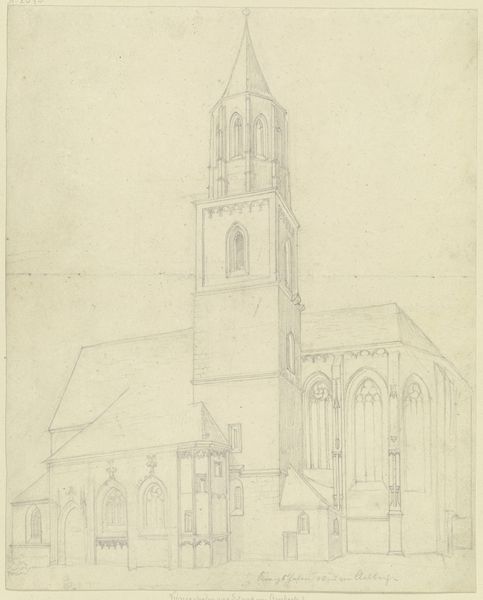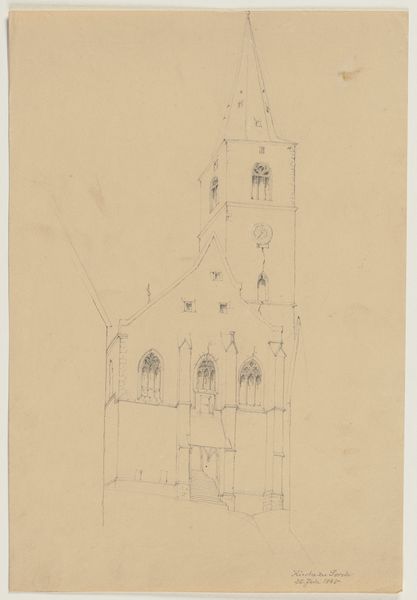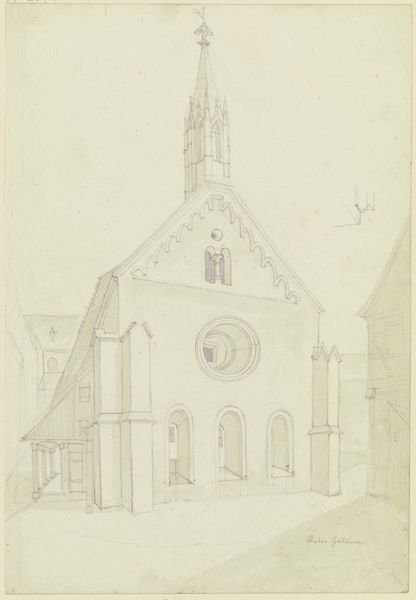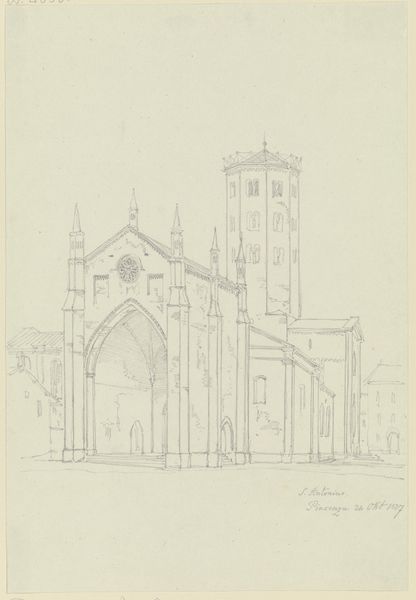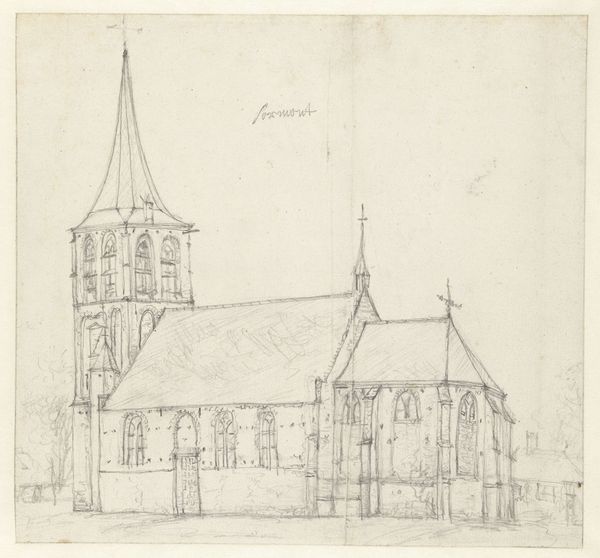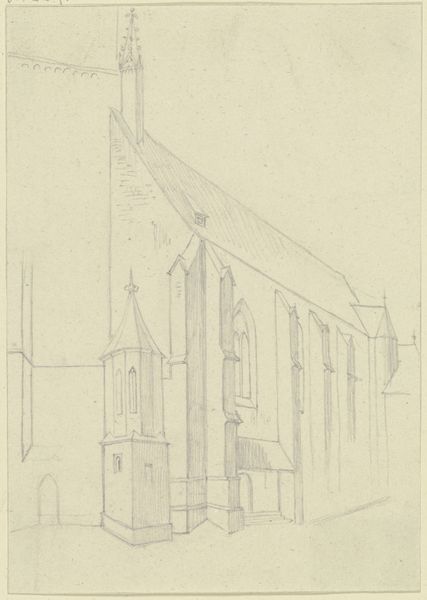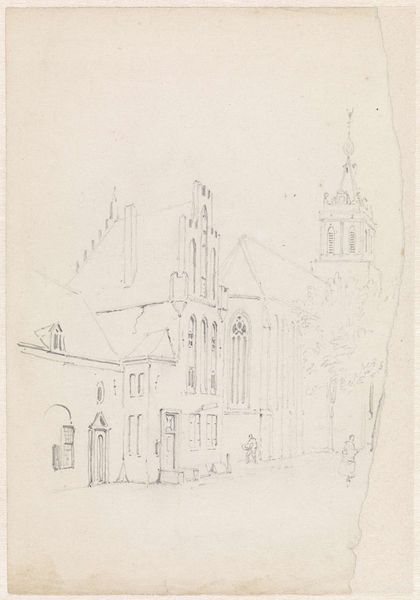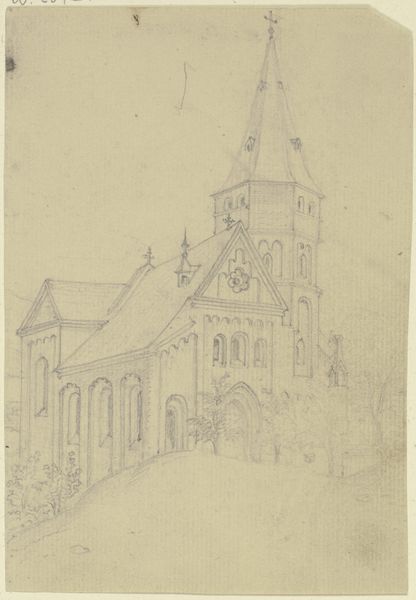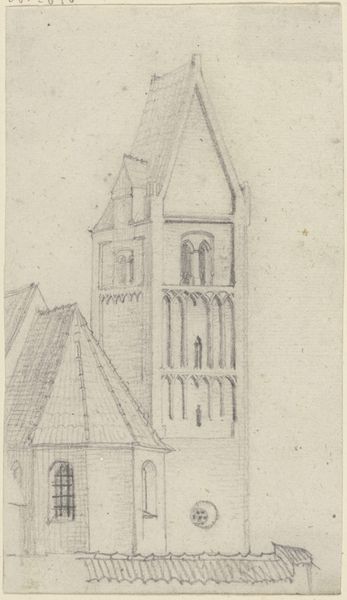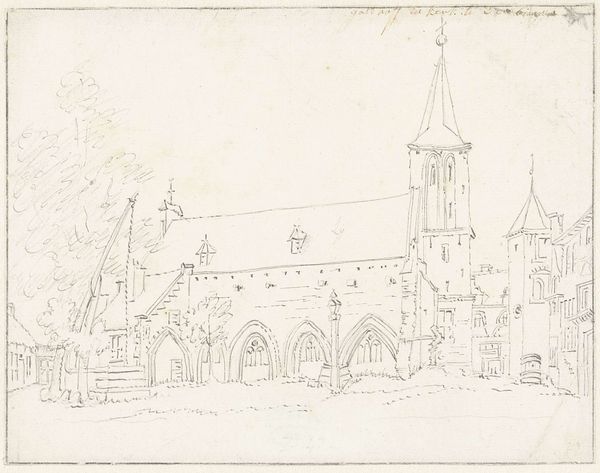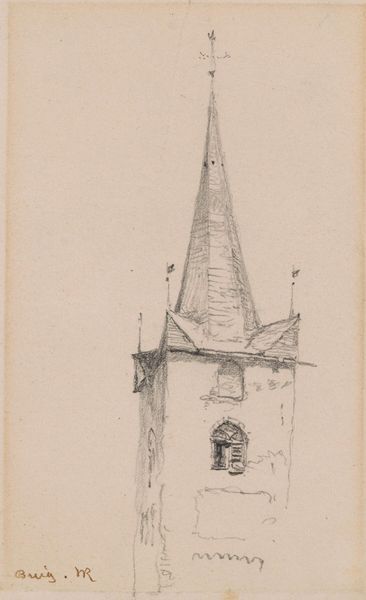
Copyright: Public Domain
Curator: I'm immediately struck by the sparseness. It's a church, but rendered with such delicate lines that it feels almost ethereal, a whispered prayer rather than a bold declaration. Editor: Indeed. We're looking at "Zum heiligen Kreuz in Assmannshausen" by Friedrich Wilhelm Ludwig, sketched in 1845. It's a pencil drawing, demonstrating the artist's interest in both architecture and the romantic landscape. I think the understated quality reflects the growing secularism of the Biedermeier era, quietly documenting religious life. Curator: I love how the pencil line captures the light glinting off the steeple. It gives the building a lightness, a fleeting quality, as if it might dissolve back into the landscape at any moment. Makes you think of the temporary nature of earthly things against the supposed permanence of faith. Editor: Absolutely. Ludwig, while part of the Romantic movement, also reveals through these simple lines a dialogue on institutionalized religion. The gothic arches hint at power, while the simplicity of the drawing acknowledges the Reformation's legacy, questioning overt displays of wealth and faith. It becomes a commentary on the evolving role of the Church. Curator: And perhaps a nod to the Rhineland Romanticism. The way the church sort of organically grows out of the paper, unburdened by excessive details, mirroring that movement’s fondness of a direct, unembellished encounter with nature. Did that movement consider any sort of equity though? Editor: Often no. It reflected the patriarchal structure of that era, prioritizing white male perspectives in art and history. While critiquing established systems, Rhineland Romanticism inadvertently became a means for preserving traditional power structures and ignoring perspectives outside of gendered expectations. Curator: So, in essence, even in its delicate portrayal, this work unknowingly echoes the structural inequalities prevalent at that time. Something to keep in mind when pondering those subtle pencil strokes, I suppose. Editor: Precisely. Art holds so many silences too. Always worthwhile remembering, and considering who those silences serve to protect and why.
Comments
No comments
Be the first to comment and join the conversation on the ultimate creative platform.
